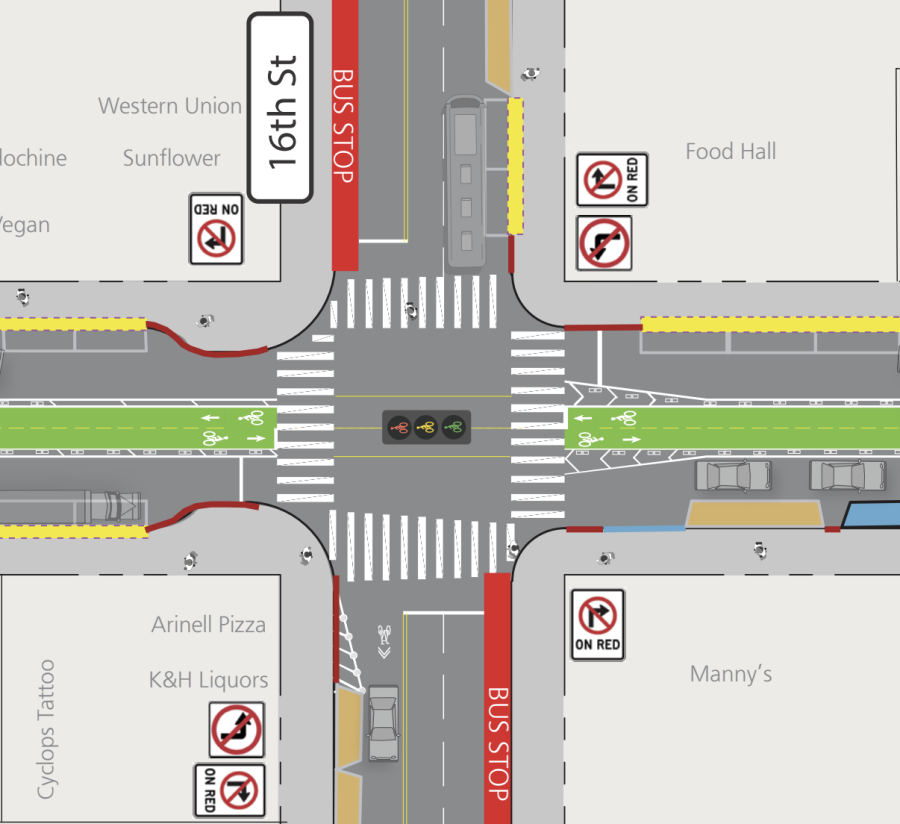Valencia center-running bike lanes ridiculed by cyclists, safety advocates
On September 20, the San Francisco Municipal Transportation Agency (SFMTA) published its new plan for cycling lanes on Valencia Street. The plan outlines center-running bike lanes surrounded on both sides by car traffic. The agency cited Washington, D.C.’s Pennsylvania Avenue center running bike lanes as an example of success despite those lanes being considered for removal due to their unsafe nature.
Much of Valencia St. is in San Francisco’s High Injury Network. The Network is a list compiled by the City of road segments that make up a disproportionate amount of crashes where cars hit pedestrians and cyclists.
“[Valencia has] always been unsafe, and it’s become less and less safe over time,” said Zach Lipton, a transit and bike safety advocate. “The bike lanes are pretty much always filled with double parked cars, which forces everyone who’s cycling on Valencia to merge out from the bike lane into traffic to get around.” The design issues with Valencia’s current unprotected lanes have been exacerbated by an increase in cyclists on the street since the beginning of the COVID-19 pandemic.
“There’s just been an explosion of cyclists using Valencia, which includes a lot of families bringing kids on cargo bikes to and from the four schools on the corridor, and everyone who’s taken up cycling during the pandemic,” said Lipton.
“I’d say Valencia itself has also really become so popular during that time. People want more from the street in general, whether they’re on a bike or not. It’s not just a thoroughfare for cyclists, but it’s a destination where people are sitting on the street and parklets,” said Lipton.
In January, in response to rampant double parking in the bike lane, protesters from the group SafeStreetRebel staged a Just A Minute (JAM) protest, blocking the car travel lane every time a car blocked the bike lane. “The SFMTA is committed to installing protected bikeways on Valencia Street in 2022,” said the agency in a statement soon after the protests, though they did not commit to specifics.
Cyclist and pedestrian advocates argue that SFMTA needs to prioritize the mobility and safety of cyclists and pedestrians over vehicle through-traffic.
“They’re really trying to make the street do too much. It’s simultaneously this thriving commercial corridor. It’s one of the main north-south bike routes for people traveling through the Mission,” says Lipton.
Lipton says SFMTA has done this to itself. “It’s sort of the only way that they have given the constraints that they have imposed upon themselves. What we’re asking for is some of those constraints [on the design] to be removed.”
“There’s outdoor dining and retail. The sidewalks are crowded, and it’s also a through street for car traffic. They’re trying to have a design that mixes all of these things. The street is only so wide, and it can’t do all of those things at once.” ◼












